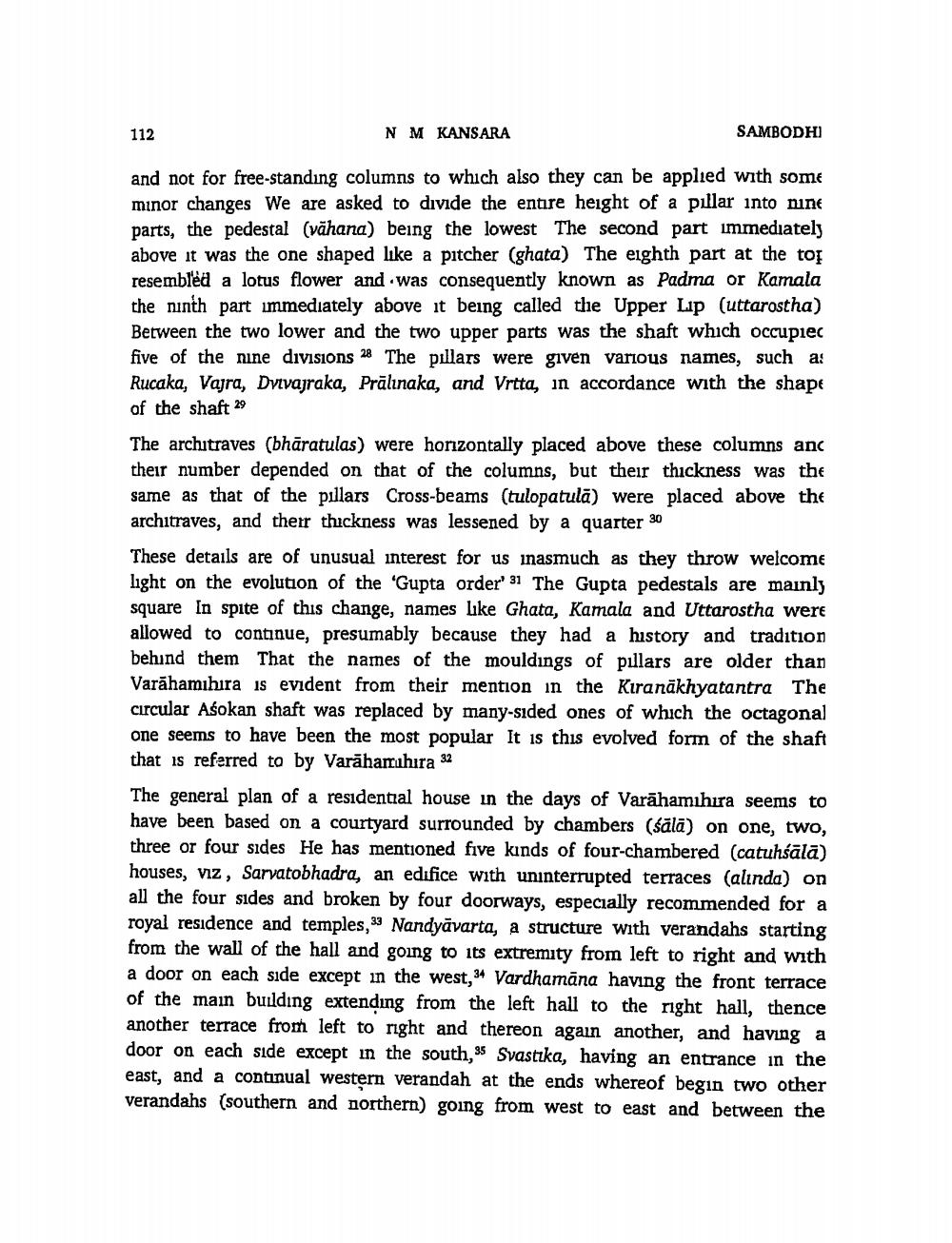________________
112
NM KANSARA
SAMBODHI
and not for free-standing columns to which also they can be applied with some minor changes We are asked to divide the entire height of a pillar into nine parts, the pedestal (vāhana) being the lowest The second part immediately above it was the one shaped like a pitcher (ghata) The eighth part at the top resembled a lotus flower and was consequently known as Padma or Kamala the ninth part immediately above it being called the Upper Lip (uttarostha) Between the two lower and the two upper parts was the shaft which occupiec five of the nine divisions 28 The pillars were given various names, such as Rucaka, Vajra, Dvivajraka, Prālınaka, and Vetta, in accordance with the shape of the shaft 29 The architraves (bhāratulas) were horizontally placed above these columns and their number depended on that of the columns, but their thickness was the same as that of the pillars Cross-beams (tulopatulā) were placed above the architraves, and therr thickness was lessened by a quarter 30 These details are of unusual interest for us inasmuch as they throw welcome light on the evolution of the 'Gupta order' 31 The Gupta pedestals are mainly square In spite of this change, names like Ghata, Kamala and Uttarostha were allowed to continue, presumably because they had a history and tradition behind them That the names of the mouldings of pillars are older than Varāhamihira is evident from their mention in the Kıranākhyatantra The circular Asokan shaft was replaced by many-sided ones of which the octagonal one seems to have been the most popular It is this evolved form of the shaft that is referred to by Varāharuhıra 32
The general plan of a residential house in the days of Varāhamıhıra seems to have been based on a courtyard surrounded by chambers (śālā) on one, two, three or four sides He has mentioned five kinds of four-chambered (catuhśālā) houses, viz, Sarvatobhadra, an edifice with uninterrupted terraces (alında) on all the four sides and broken by four doorways, especially recommended for a royal residence and temples, 33 Nandyāvarta, a structure with verandahs starting from the wall of the hall and going to its extremity from left to right and with a door on each side except in the west, 34 Vardhamana having the front terrace of the main building extending from the left hall to the right hall, thence another terrace from left to right and thereon again another, and having a door on each side except in the south, 95 Svastika, having an entrance in the east, and a continual western verandah at the ends whereof begin two other verandahs (southern and northern) going from west to east and between the




